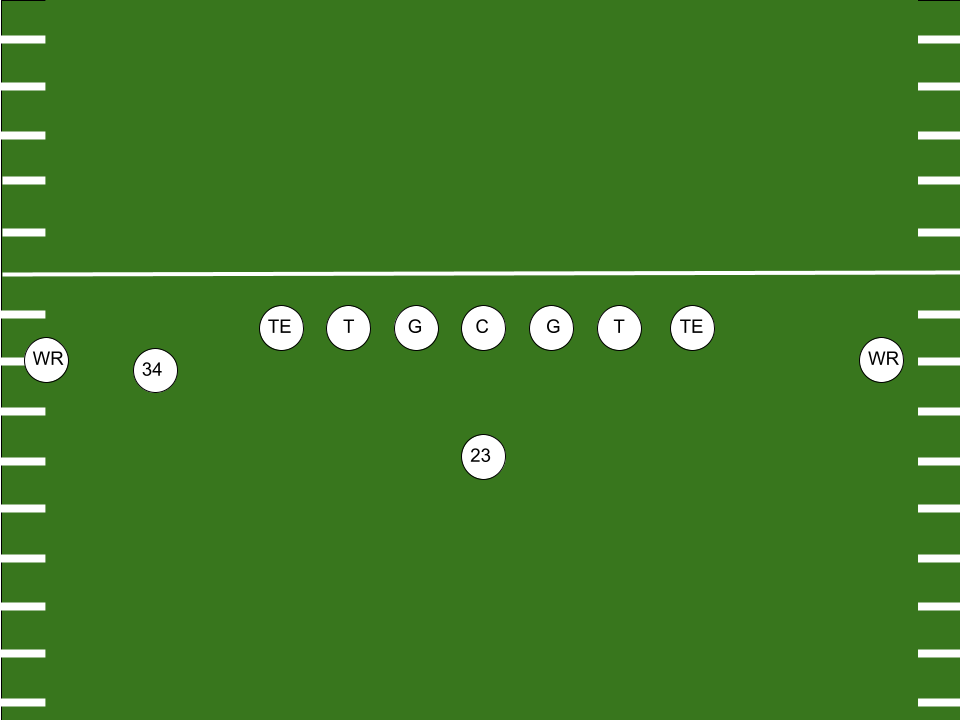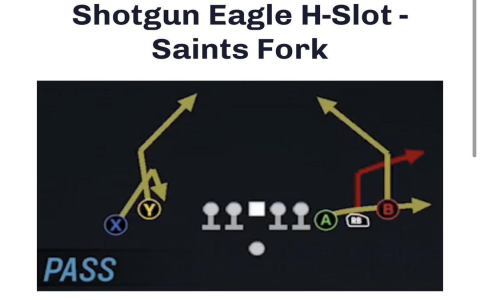The Wildcat offense is a formation and offensive philosophy that features a direct snap to a player who is not the traditional quarterback, typically a running back or a versatile wide receiver. This often creates an unbalanced offensive line and a numerical advantage at the point of attack.
Core Principles and Advantages
- Numerical Advantage: By having the snap go directly to a primary ball carrier, the player who would traditionally hand off (the QB) can become an extra blocker or receiver, creating an 11-on-10 situation in the running game against the defense’s front.
- Deception and Misdirection: The unconventional alignment forces defenses to adjust quickly and can create confusion regarding assignments and gap responsibilities.
- Power Running Focus: The Wildcat is inherently designed to bolster the run game, often utilizing multiple lead blockers and strong, decisive runners.
- Exploiting Personnel Mismatches: It can put athletic playmakers in a position to make decisions with the ball in their hands immediately, potentially stressing defensive discipline.
- Red Zone and Short Yardage Efficacy: The ability to add an extra blocker makes it a potent tool in compressed areas of the field where gaining a few yards is critical.
Key Wildcat Formations
While variations exist, common Wildcat formations share core characteristics:
- Unbalanced Line: Often, an offensive tackle or guard will shift to one side, creating an overload.
- Direct Snap: The ball is snapped directly to the primary “Wildcat” player, positioned similarly to a shotgun quarterback or deeper.
- Multiple Backs/Blockers: Additional running backs or tight ends are frequently used as lead blockers. The traditional quarterback might line up as a wide receiver or even be off the field.
Essential Wildcat Plays
The Wildcat playbook, while centered on the run, incorporates various concepts:

- Power Run: The staple play. The Wildcat back takes the direct snap and follows lead blockers through a designated gap. This is often an inside zone or power-o scheme.
- Sweep / Jet Sweep: Utilizing the Wildcat player’s speed to attack the perimeter, often with pulling linemen or receivers blocking on the edge.
- Counter: A misdirection play designed to make the defense over-pursue one way, with the Wildcat player cutting back against the grain behind trapping blockers.
- Keeper: The Wildcat player fakes a handoff (if another back is present for deception) or a run in one direction and keeps the ball, often attacking an unblocked defender or a vacated lane.
- Passing Options (Limited):
- Pop Pass: A quick, short pass over the line, often to a tight end or slot receiver, off a run fake.
- Wildcat Player Pass: If the designated Wildcat player has throwing ability, simple play-action passes can be incorporated to keep the defense honest. This is less common but adds a dangerous element.
Coaching and Execution Considerations
- Player Skillset: The ideal Wildcat operator is a decisive runner with good vision, toughness, and ideally, some ability to throw a short pass accurately.
- Offensive Line Adjustments: Linemen must be adept at communicating and executing blocks from unbalanced formations and against potentially shifting defensive fronts.
- Repetition: The timing and execution of direct snaps and blocking schemes require significant practice to be effective.
- Strategic Implementation: The Wildcat is most effective when used strategically as a change-of-pace or in specific situations (e.g., short yardage, red zone) rather than as a primary offensive scheme for most teams. Defenses will adapt if it becomes too predictable.



